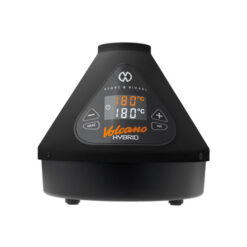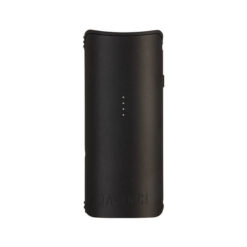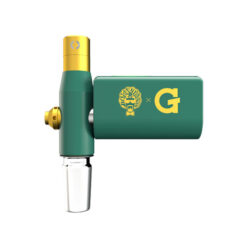In recent years, the world of cannabis consumption has expanded beyond traditional methods, with an increasing number of enthusiasts turning to the creation of their own cannabis concentrates through do-it-yourself (DIY) extraction techniques. Cannabis concentrates, known for their potency and diverse forms, offer a concentrated experience of the plant’s therapeutic and recreational properties.
We will explore the fascinating realm of DIY cannabis extraction, guiding readers through the process of crafting their own concentrates at home. From understanding the various extraction methods to navigating legal considerations, selecting the right strain, and ensuring safety throughout the process, this comprehensive guide aims to empower individuals interested in elevating their cannabis experience through hands-on extraction practices.
Understanding Cannabis Concentrates
Cannabis concentrates are potent extracts derived from the cannabis plant, renowned for their heightened levels of cannabinoids, terpenes, and other beneficial compounds. Unlike traditional cannabis flower, concentrates are characterised by a much higher THC (tetrahydrocannabinol) or CBD (cannabidiol) concentration, offering consumers a more efficient and potent experience. These concentrates come in various forms, each with its unique characteristics, flavours, and effects.
Common types include hash, kief, shatter, wax, and oils. The extraction process involves separating the desirable compounds from the plant material, leaving behind a concentrated substance that can be vaporised, dabbed, or infused into various products. The increased potency of concentrates allows for faster onset of effects and more precise dosing, making them popular among both medical and recreational users. As we explore the world of DIY extraction, it’s crucial to have a solid understanding of these concentrates, their properties, and how different extraction methods can influence their final composition.
Benefits And Risks Of DIY Extraction
While DIY extraction offers exciting possibilities, individuals should approach the process with caution, prioritise safety, and be aware of the potential risks involved. Proper education, adherence to legal regulations, and meticulous attention to safety protocols are essential for a successful and secure DIY extraction experience.
Benefits
- Cost-Effective: One of the primary advantages of DIY extraction is the potential cost savings compared to purchasing commercially available concentrates. With the right equipment and materials, enthusiasts can produce concentrates at a fraction of the cost of retail products.
- Customisation: DIY extraction allows individuals to tailor their concentrates to personal preferences. From choosing specific strains to adjusting cannabinoid ratios, users have the freedom to create a product that aligns with their desired effects and flavours.
- Educational Opportunity: Engaging in DIY extraction provides a unique educational experience. Enthusiasts can deepen their understanding of the cannabis plant, extraction methods, and the science behind concentrates, fostering a sense of empowerment and knowledge within the community.
- Control Over Ingredients: DIY enthusiasts have complete control over the quality of ingredients used in the extraction process. This control is particularly beneficial for those who prioritise organic or specific cultivation practices.
Risks
- Safety Concerns: DIY extraction involves working with flammable solvents and potentially hazardous equipment. Without proper precautions, there is an increased risk of accidents, such as fires or explosions. Adequate ventilation, safety gear, and knowledge of the extraction process are crucial for minimising risks.
- Legal Implications: The legality of DIY extraction varies widely depending on jurisdiction. In some areas, home extraction may be prohibited or subject to specific regulations. Failing to adhere to local laws can result in legal consequences, emphasising the importance of researching and understanding regional regulations.
- Quality Control Challenges: Achieving consistent quality in DIY extraction can be challenging. Factors such as temperature, pressure, and extraction times can influence the final product. Inconsistencies may affect the overall potency and safety of the concentrate.
- Contamination Risk: Inadequate equipment cleaning and maintenance can lead to contamination of the final product. Contaminants, including residual solvents or impurities from equipment, may pose health risks if consumed.
Types Of Cannabis Extraction Methods
The process of extracting cannabinoids and other compounds from the cannabis plant involves various methods, each with its unique characteristics, advantages, and considerations.
Solvent-Based Extraction
- Overview: This method uses solvents such as butane, propane, ethanol, or CO2 to dissolve and extract cannabinoids and terpenes from the plant material.
- Pros: Efficient extraction, high cannabinoid yield, and the ability to preserve terpene profiles.
- Cons: Safety concerns due to flammable solvents, potential for residual solvent traces, and the need for sophisticated equipment.
CO2 (Supercritical Carbon Dioxide) Extraction
- Overview: Utilising CO2 in both liquid and gas states, this method is considered safe and efficient. It involves adjusting temperature and pressure to extract specific compounds selectively.
- Pros: Precise control over extraction parameters, minimal risk of residual solvents, and the ability to target specific cannabinoids.
- Cons: High upfront equipment costs and technical expertise required for operation.
Rosin Pressing
- Overview: This solventless method involves applying heat and pressure to cannabis flower or hash to extract resin. It is popular among DIY enthusiasts for its simplicity.
- Pros: No need for external solvents, minimal equipment requirements, and a relatively straightforward process.
- Cons: Lower yields compared to some solvent-based methods, and the potential for less selective extraction of cannabinoids and terpenes.
Ice Water Hash (Bubble Hash) Extraction
- Overview: This solventless method uses ice-cold water to separate trichomes from the plant material, followed by filtration to collect hash.
- Pros: No use of solvents, relatively simple process, and the ability to produce high-quality hash.
- Cons: Lower yields compared to solvent-based methods, and the need for specific equipment and careful handling.
Ethanol Extraction
- Overview: Involves soaking cannabis material in ethanol to extract cannabinoids and other compounds. The resulting solution is then evaporated to concentrate the extract.
- Pros: Efficient extraction, relatively safe compared to some solvents, and the ability to produce full-spectrum extracts.
- Cons: Potential for residual ethanol, which requires thorough purging, and the need for proper ventilation due to flammability.
Choosing The Right Strain For Extraction
Selecting the right cannabis strain is a critical step in the DIY extraction process, as different strains contain varying levels of cannabinoids, terpenes, and other compounds, influencing the flavour, aroma, and effects of the final concentrate.
Cannabinoid Content
Determine the ratio of THC (tetrahydrocannabinol) to CBD (cannabidiol) based on your desired effects. Strains with higher THC content are known for their psychoactive properties, while those with higher CBD may offer more therapeutic benefits without the intense euphoria.
Terpene Profile
Terpenes contribute to the flavour and aroma of the final concentrate. Consider the terpene profile of the strain to achieve the desired taste and scent. For example, strains rich in myrcene may have earthy and musky notes, while limonene-dominant strains offer citrusy aromas.
Strain Type
Understand the characteristics of indica, sativa, and hybrid strains. Indicas are often associated with relaxation, while sativas may provide more energetic effects. Hybrids combine traits from both.
Growing Conditions
The growing environment can influence a strain’s overall quality. Indoor cultivation allows for more controlled conditions, potentially resulting in a more consistent and potent end product.
Yield And Resin Production
Look for strains with high trichome density, as trichomes contain the cannabinoids and terpenes sought after in extraction. A strain known for resin production is likely to yield more concentrated extracts.
Personal Preferences
Consider your personal experience with cannabis and tolerance levels. Beginners may prefer strains with lower THC content, while experienced users might seek higher potency.
End Use Of The Concentrate
The intended use of the concentrate can influence strain selection. Those seeking relief from specific medical conditions may prioritise strains with particular cannabinoid and terpene profiles.
Equipment And Supplies Needed For DIY Extraction
Embarking on a DIY cannabis extraction journey requires careful consideration of the equipment and supplies to ensure a safe and successful process. The following list outlines essential items needed for various extraction methods:
- Closed-Loop Extraction System (for solvent-based methods): A closed-loop system is essential for safety, allowing the controlled use and recovery of solvents like butane or propane. It typically consists of a collection chamber, extraction vessel, and recovery system.
- CO2 Extraction Machine (for CO2 extraction): If opting for CO2 extraction, a specialised machine is necessary. These machines control temperature and pressure to extract cannabinoids efficiently.
- Rosin Press (for rosin extraction): A rosin press applies heat and pressure to cannabis material. Different types of presses are available, including manual, hydraulic, and pneumatic.
- Bubble Bags (for ice water hash extraction): For those using the ice water hash method, bubble bags are essential for separating trichomes from the plant material.
- Protective Gear: Wear appropriate protective gear, including gloves and safety glasses, to minimise the risk of contact with solvents and other potentially hazardous materials.
- Ventilation System: Ensure proper ventilation in the extraction area to prevent the accumulation of flammable fumes and maintain a safe working environment.
- Testing Kits: Consider investing in testing kits to analyse the cannabinoid and terpene profiles of your extracts. This helps ensure consistency and quality.
- Scale and Measuring Tools: Accurate measuring tools are crucial for dosing and achieving consistent results.
- Filter Papers: Used for filtering extracts to remove plant material and impurities.
- Parchment Paper: Essential for collecting and handling extracts, especially in rosin pressing.
- Silicone Containers: Ideal for storing concentrates due to their non-stick properties.
- Solvents (if applicable): If using solvent-based methods, choose high-purity solvents suitable for extraction. Ensure proper storage and handling.
- Isopropyl Alcohol: Used for cleaning equipment and ensuring a sterile environment.
- Cleaning Brushes: Small brushes help clean hard-to-reach areas of equipment.
- Heat Source: Depending on the extraction method, a heat source may be needed to regulate temperature.
- Storage Containers: Choose airtight and light-resistant containers for storing the final concentrates.
Step-By-Step Guide To DIY Cannabis Extraction
Before embarking on the DIY cannabis extraction journey, it’s imperative to familiarise yourself with the chosen extraction method, gather the necessary equipment, and prioritise safety.
Step 1: Choose The Extraction Method
Select the extraction method that aligns with your preferences, safety considerations, and the desired characteristics of the final concentrate. Common methods include solvent-based extraction, CO2 extraction, rosin pressing, and ice water hash extraction.
Step 2: Gather Equipment And Supplies
Assemble all the required equipment and supplies according to the chosen extraction method. Ensure that everything is clean, in good working condition, and meets safety standards. Don’t forget to wear appropriate protective gear.
Step 3: Prepare The Cannabis Material
If using flower material, grind it to an appropriate consistency. For hash or kief extraction, ensure that the starting material is of high quality. The trichome density will impact the yield and quality of the final concentrate.
Step 4: Set Up Extraction Space
Establish a well-ventilated and properly equipped workspace. Consider using a fume hood or working in an area with good air circulation, especially if using solvents. Avoid open flames and ensure a clean, organised environment.
Step 5: Follow Extraction Procedure
Adhere to the specific extraction procedure for the chosen method. This may involve introducing solvents, applying heat and pressure, or utilising mechanical processes. Follow each step meticulously to achieve optimal results.
Step 6: Monitor Extraction Parameters
Maintain careful control over extraction parameters, such as temperature, pressure, and duration. Monitoring these variables ensures the extraction process is efficient and produces a high-quality concentrate.
Step 7: Purge (if using solvents)
If the extraction involves solvents, it’s crucial to purge the final product to remove any residual solvent. This typically involves heating the extract gently to allow solvents to evaporate. Use a vacuum oven or a hot plate with adequate ventilation.
Step 8: Test And Analyse
Consider testing the final concentrate using cannabinoid and terpene analysis kits. This step provides valuable information about the composition of the extract, allowing for adjustments in future extraction processes.
Step 9: Store The Concentrate
Store the final concentrate in airtight, light-resistant containers. Proper storage helps maintain the potency, flavour, and overall quality of the concentrate over time.
Step 10: Clean And Maintain Equipment
Thoroughly clean all equipment used in the extraction process to prevent contamination and ensure the longevity of the tools. Follow proper maintenance procedures for each piece of equipment.
Step 11: Document And Learn
Keep detailed records of each extraction session, including strains used, extraction parameters, and any adjustments made. This documentation is valuable for refining your process and achieving consistency.
As we conclude this exploration into the realm of DIY cannabis extraction, it becomes evident that the process is a fascinating blend of science, artistry, and responsibility. Creating your own cannabis concentrates at home offers a unique opportunity for enthusiasts to tailor their experiences, from choosing specific strains to controlling extraction methods and fine-tuning the final product. However, it is crucial to approach DIY extraction with caution, emphasising safety, adherence to legal regulations, and a commitment to quality control.
As the landscape of cannabis consumption evolves, DIY extraction provides individuals with a deeper connection to the plant, an enhanced understanding of its complexities, and the ability to create personalised, potent concentrates. Remember, responsible experimentation, continuous learning, and a commitment to ethical and legal practices are essential pillars of the DIY cannabis extraction journey.
-
DAVINCI IQ-C
R3,950.00Original price was: R3,950.00.R3,450.00Current price is: R3,450.00. -
Volcano – HYBRID (Onyx)
R11,000.00Original price was: R11,000.00.R9,499.00Current price is: R9,499.00. -
DAVINCI MIQRO-C Vaporizer
R2,750.00 -
Grenco Science – G Pen Connect Vaporizer Dr. Greenthumbs (Green)
R3,000.00










